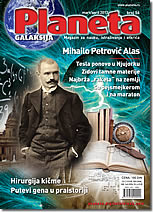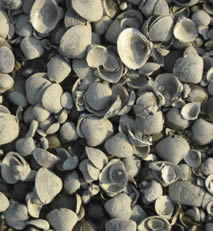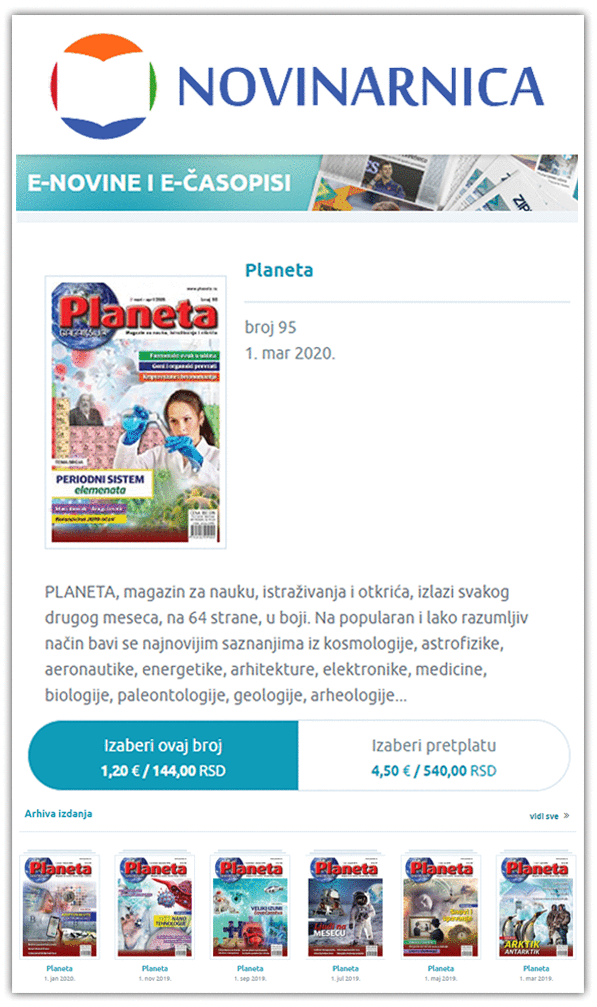| » BROJ 56 |
 |
Godina X
Mart - April 2013.
|
|
| » Glavni naslovi |
SUMMARY
SummarY
The feature article of this issue:
| Mihailo Petrović Alas |
|
 |
Mihailo Petrović ALas, the great Serbian mathematician and, during the first half of the 20th century the professor of the University of Belgrade, dealt with the issues of differential equations and in this field became a scientist of world reputation. He studied mathematics in Paris, at the Ecole Normal Superieuir, Section des Sciences. He was the first foreign student of this distinguished institution of higher education. His professors included the then famous mathematicians Poincare, Picar, Penleve, etc. At the Sorbonne he studied chemical, mathematical, and physical sciences (Licence des sciences chemie, mathematiques et physiques), and he defended his Ph.D. thesis titled „Sur les zeros et les infinis integrales des equations differentielles". Petrović returned to Belgrade in 1894 and right away became fulltime professor of the High School, and afterwards the regular professor of mathematics at the University of Belgrade which was established in 1905.
Apart from his scientific work, Mihailo Petrović Alas was famous as inventor. He patented five of his inventions: the distance meter (for military use), the gear (the initial form of the automatic automobile gear), the eternal calendar, the device for navigation after the ship is damaged, and the piston engine of alternate effect. Apart from these inventions, patented in France, Alas constructed a hydrogenerator (awarded at the World Exhibition in Paris in 1900 by third prize), he invented coding, depth meter, a model of efficient avoidance of mine fields, a device for launching of projectiles, etc.
In Belgrade he also led a music ensemble performing many, almost or already forgotten songs and music of former Yugoslavia. He travelled to the South and North Pole, wrote novels and travel essays, and was a master of fishing.
As a pedagogue, he raised a great number of successful mathematicians, in Serbia and abroad. |
Nikola Tesla
Conference in New York |
|
 |
On the occasion of 70 years of death of the great Serbian scientist and one of the greatest world inventors in the filed of electrical engineering, Nikola Tesla, a Memorial Conference was held from 5 to 7 January in New York, at the New Yorker Hotel, dedicated to Tesla's scientific work and inventions by which he amazed the world. It was in this hotel that Tesla spent the ten last years of his life and that he died on 7 January 1943, on Christian Orthodox Christmas. The Conference was organised by the „Nikola Tesla Science Foundation", from Philadelphia, under the slogan „Why Tesla matters".
The most significant invention of Tesla's was the alternating current induction motor, based on the rotating magnetic field. Tesla was also among the founders of radiophony, an inventor of the high frequency generator, oscillatory transformer, etc.
A campaign is underway to collect funds for the building of a scientific centre in Wardenclyffe on Long Island, where remains of Tesla's last laboratory are kept. It was in this location that Tesla worked on the project of the global system of wireless transmission.
The purpose of the Conference was to bring together as many people who respect Tesla's work and inventions and raise the awareness of the public regarding the unforgettable contribution made by this scientist. |
Aeronautics
60 years of jet aviation in Serbia
|
|
 |
Five jet aircrafts of American making, type „T-33", first flew in the sky above the Batajnica airport (near Belgrade) on 10 May 1953. This event marked the beginning of the new era of Serbian aviation. Subsequently Serbia acquired also the stateoftheart Russian aircrafts „Mig-21", which for a ling time remained the key pillar of Serbian military Air-Force.
During the 1950's, a group of constructors headed by major Dragoljub Bešlin constructed the first jet aircraft of domestic make, the „451 M" with imported jet engine. The subsequently improved versions of this model, specifically „Zolja", „Matica" and „Stršljen" were all equipped with nationally produced engines.
Subsequent development was targeted to improving these models, of which none ended up in serial production. The first turbo-jet plane in serial production was „Galeb G-2". Over about a quarter of a century a total of 251 such aircrafts were produced. Later models that went into production were „Jastreb" and „ Orao" (an effort done jointly with Romanian engineers). The pride of the Serbian aviation industry was the „Super Galeb G-4", designed in the 1970's. With the disintegration of former Yugoslavia the development of an advanced jet plane of 4th generation was abandoned.
|
Cardiology
With a pacemaker - marathon is possible |
|
 |
The most advanced pacemakers are complex technological „prostheses", mini robots which through their automation respond in line with the needs of the human body. Professor Goran Mališanović, Ph.D., director of the Pacemakers Centre within the Clinical Centre of Serbia, speaks on the present and future of pacemakers for „Planeta".
Pacemakers have been in use since 1958. In mid 1990's defibrillator pacemakers were introduced. The third generation are pacemakers used in the treatment of arrhythmias, the socalled resynchronisation devices (used as implants since 2000). It is expected that over the next ten years capsular micro pacemakers will be introduced, intended to be implanted in the heart. Another novelty will be pacemakers defibrillators with subcutaneous placement around the chest. |
Surgery
Treatment for discus hernia |
|
 |
The most advanced form of surgical manner of discus hernia is performed in Serbia. Marko Markovic, M.Sc. neurosurgeon of the Clinical-Hospital Centre Zemun and a consultant at the general hospital Bel Medic in Belgrade is speaking of two years of experience in this field and the advantages of this low-invasive surgical method.
Since March 2011 this method was used to perform surgery on more than one hundred patients, with excellent results and without complications. Dr Markovic explains the nature of the disorder and how it happens, the diagnostic procedure, treatment, indications for surgery, the course and procedure of the surgery, possible risks and rehabilitation. The remission of the disorder is possible in only 7% of patients. |
Dentistry
Aesthetic dental restoration |
|
 |
High quality materials for dental treatment and upgrading makes it possible today to have not only functional treatment but also practically ideal imitation of their natural appearance. Dr Jelena Spasic speaks of these topics for „Planeta" from her experience as dentist at the General Hospital Bel Medic in Belgrade.
White fillings made from last generation of composite materials meet the highest standards of treatment and aesthetics. The materials are available in all nuances and can be adjusted to the natural colour, and their layered application gradually forms the morphological shape of teeth. Such fillings have a life of at least five years, and along with cleaning and polishing possibly longer. Except in the dental surgery, whitening is also possible at home, and is done with a combination of whiteners of different concentrations. A laser procedure is also possible. |
Bio-archaeology
The roads of genes through history
|
|
 |
The National Museum from Belgrade has recently published, in the Serbian and English language, the „Guide through Culture: Lepenski vir". The book presents all the accumulated knowledge of this more than 8000 years old archaeological site.
The discovery of the settlement in Lepenski vir, on the banks of the Danube, in eastern Serbia, has opened up a completely new chapter of European pre-history. The site is unique not only in terms of its sculptures, the oldest in Europe, but also in the fact that it enables us to understand the process of Neolithisation of this part of the European continent. The remains of skeletons of Lepenski vir indicate that this was a healthy and long-living population, individuals living as long as 80 years.
The European Union is funding the project BEAN (Bridging European and Anatolian Neolithic) in order to determine how the Neolithic happened and how people, after two million of years of hunting and gathering, made a stop, experienced a population boom, domesticated wild animals, and how the biological, climatic, and cultural factors influenced the Neolithic from the near east, especially from Anatolia, to spread to Europe. |
The Eco System
New Shells in the Danube |
|
 |
The island "Veliko Ratno ostrvo", located at the confluence of the Sava into the Danube, was created by sediments brought forward by the Danube. It was observed for the first time back in the 16th century, as a small sand isle. Currently it is populated by numerous plant and animal species and throughout the year is a refuge habitat for many living species which together make up the unique eco-system practically in the centre of Belgrade.
For a number of years now, the presence of a great number of shells and snails was observed on the upstream part of the island, especially the shell Corbicula, and extremely invasive and adjustable species feeding on particles from the water and the sediment. In its current volume it is a threat to the eco-system. |
|
|
|
| » Pratite nas |
 |
 |
|
» Prijatelji Planete |
| » ON LINE PRODAJA |
|

6 digitalnih izdanja:
5,40 EUR/540,00 RSD
Uštedite čitajući digitalna izdanja 50%
Samo ovo izdanje:
1,44 EUR/144,00 RSD
Uštedite čitajući digitalno izdanje 20%
www.novinarnica.net
|
|
|

